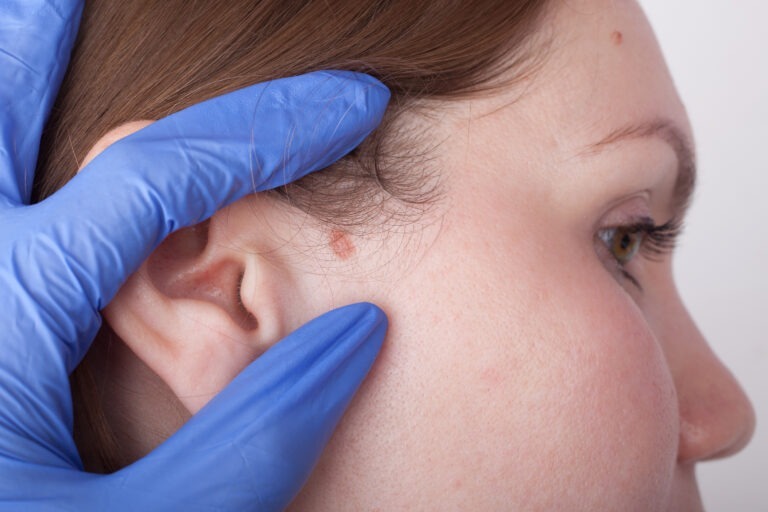Skin Cancer Surgery

Types of Skin Cancer
Skin cancer comes in three main forms: basal cell carcinoma (BCC), squamous cell carcinoma (SCC), and melanoma.
Basal Cell Carcinoma (BCC): This is the most frequently occurring skin cancer type, which generally is observed on the face, ears, neck, scalp, legs, and back. BCCs are not known to metastasize except in rare cases but can invade deeper tissues if not treated. Some early BCCs can be treated without surgery, while surgical excisions are usually required to obtain effective results.
Squamous Cell Carcinoma (SCC): The second most common type of skin cancer, SCC is the more malignant one, compared to BCC. Most squamous cell carcinomas do not spread, but in some situations, they reach lymph nodes or deeper tissues with the potential to invade them. Though surgical treatments are not necessary for pre-malignant SCCs, the majority require surgical excision.
Melanoma: A more aggressive form of skin cancer that typically presents as a dark lesion. If detected early, melanoma can be cured with excision. However, if diagnosed late, melanoma may spread to lymph glands or other organs. Melanomas require aggressive surgical excision, and sometimes the removal of local lymph nodes. Unlike BCCs and SCCs, melanoma patients need long-term monitoring to check for recurrence.
Skin Cancer in Queensland
Queensland has the highest skin cancer rates globally, largely due to its climate, geographic location, and the Celtic heritage of many residents.
Surgical Treatment of Skin Cancer
Skin cancers are often treated through surgery, and Dr. Goutham uses specialised techniques to ensure both safety and cosmetic outcomes. After excision, the tissue is examined to confirm all cancerous cells have been removed.
Why Larger Incisions are Necessary
Skin cancer may have invisible extensions beneath the surface, which is why incisions are often larger than the visible tumor. The goal is to ensure clear margins, meaning that all cancerous cells are removed. If necessary, further excision may be done to achieve these margins.
Skin Cancer Reconstruction
There are instances, where minor incisions are sutured back together as one straight line, but big skin cancers, particularly those in delicate locations like the nose or shins, may need reconstruction. This might involve a skin graft or flap, where a piece of skin is cut off from the patient and relocated to the site to close the wound. Flaps tend to be used to follow the body’s natural skin creases in an effort to reduce visible scars.
Recovery After Skin Cancer Surgery
The period of recovery after the operation may involve slight discomfort and fluid drainage from the incision site. It is critical to follow the wound care instructions exactly so the healing process will be as effective as possible.
Light activities can generally be resumed, but excessive movement should be avoided to prevent stressing the wound.
Healing can take weeks to months, and incision lines may take up to two years to refine. In some cases, further procedures may be required to improve the reconstruction. Avoiding sun exposure during the healing process is crucial to prevent pigmentation changes and the risk of further skin cancer development.
All surgeries leave scars, but the appearance of these scars can vary depending on the location of the incision, skin type, and how well post-operative care instructions are followed. Some scars fade over time, while others may be raised or more noticeable.

